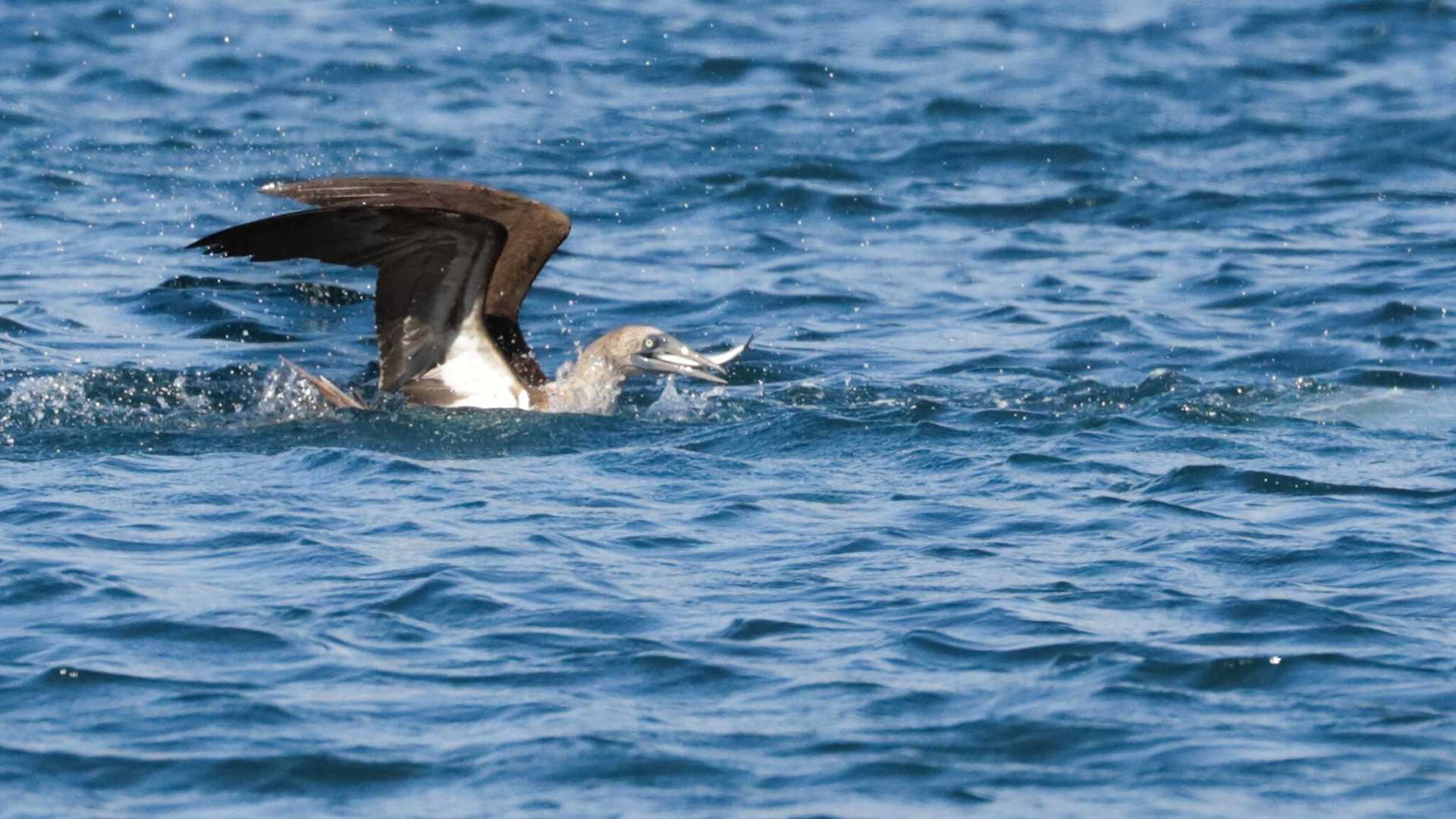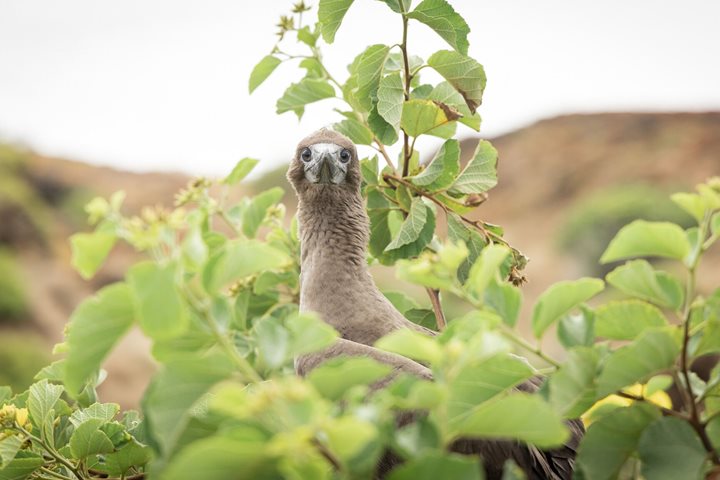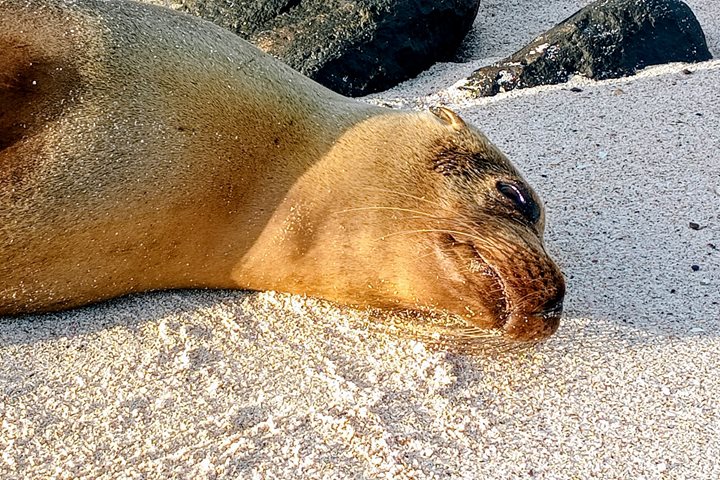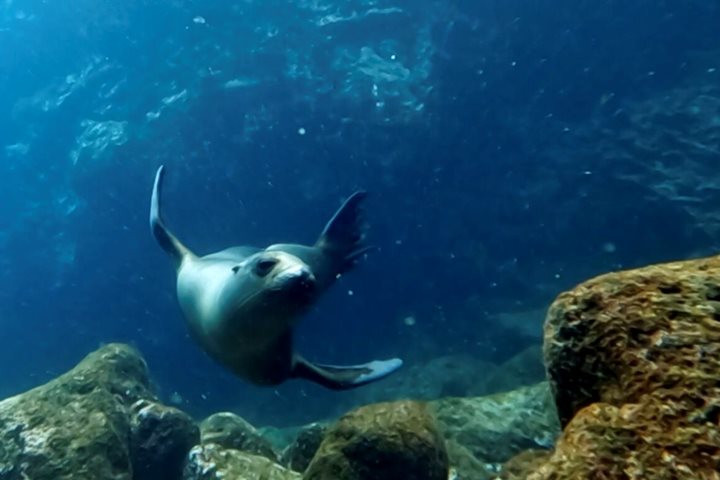As our Galapagos Islands expedition aboard National Geographic Islander II is coming to a close, today we explored Santiago Island: Espumilla beach, Buccaneer Cove, and Puerto Egas. It has been a remarkable journey filled with breathtaking landscapes, unique wildlife encounters, and insightful geological formations.
We began our exploration at Espumilla beach with an early walk. We continued to Buccaneer Cove, a stunning inlet flanked by rugged cliffs and clear azure waters. The cove's intriguing name refers to its history as a haven for pirates and buccaneers. Geological marvels were evident here — our team observed sea caves and distinctive layers of lava and tuff, a testament to the island's volcanic evolution. The cove's beaches were dotted with marine iguanas, sea lions, and numerous seabirds, providing ample opportunities for wildlife observation and photography. The Galapagos penguins were a highlight; a rare and endemic species, they darted through the water with incredible agility. We also encountered various species of shorebirds probing the intertidal zones for food.
Moving on to Puerto Egas, our team was greeted by an otherworldly landscape of lava flows, tide pools, and unique geological formations. The tuff cones and natural arches offered a living history of the island's volcanic origins. The contrast between the harsh lava terrain and the presence of life was striking. Lava lizards, endemic to the Galapagos, scuttled across the black rocks, showcasing their adaptation to this challenging environment. One of the most significant encounters at Puerto Egas was with the Galapagos fur seals. Observing these charismatic creatures in their natural habitat was an incredible experience. We maintained a respectful distance to minimize disturbance, as these seals are vulnerable to human interference. The tidal pools were home to an array of marine life, including colorful fish, and sea urchins.
The expedition to Espumilla beach, Buccaneer Cove, and Puerto Egas on Santiago Island was a journey of discovery, education, and inspiration. We were privileged to witness the natural wonders of the Galapagos Islands, from geological formations to diverse wildlife. This experience reinforced the significance of protecting such pristine environments for future generations. As we left the islands, we carried a deeper understanding of the delicate balance that sustains these remarkable ecosystems.







